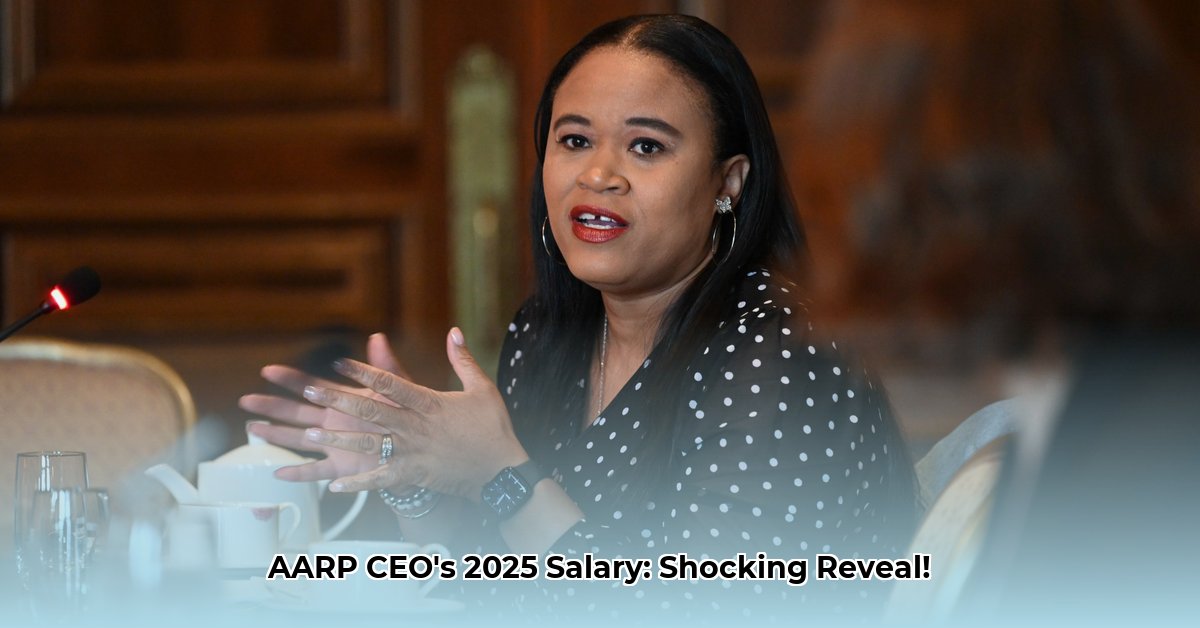
CEO AARP Salary: A Detailed Analysis of AARP's Financial Landscape
The AARP CEO's salary for 2025, while not yet publicly disclosed, is a key indicator of the organization's financial health and strategic direction. Understanding this requires examining AARP's financial performance, member engagement strategies, and future outlook. While precise figures remain unavailable, analyzing available data provides valuable insights. Reports suggest a median executive compensation at AARP around $233,899, however, the highest earner may receive significantly more – possibly around $700,000. This raises important questions about the justification and impact of such compensation on AARP's overall mission and operational efficiency. How effectively does this compensation align with the organization's commitment to supporting older Americans?
Is the compensation structure suitable given AARP's vast membership and broad operational scale? This requires a nuanced examination of AARP's financial health, exploring revenue streams, expenditures, and reserve funds by referencing AARP's public financial disclosures and IRS filings. This deeper dive allows a more comprehensive assessment of the organization's financial capacity to invest in programs, initiatives, and ongoing member engagement endeavors.
Executive Pay and AARP's Mission: A Balanced Perspective
AARP's mission extends beyond its financial statements. It is a powerful advocacy group with millions of members, a leading voice for seniors, and operates a vast network of services (e.g., AARP The Magazine, online resources, and numerous member programs). Maintaining high member engagement across diverse age groups – from those newly eligible to those in their 90s – is a paramount challenge. This necessitates significant investment in program development, targeted communication strategies, and consistent adaptation to meet evolving member needs. How does AARP's spending on executive compensation compare to investment in programs designed to meet these evolving member needs across age demographics? Does this reflect a commitment to multi-generational outreach and member retention?
AARP's Strategic Roadmap: Navigating Challenges and Opportunities
The growing aging population presents both significant opportunities and challenges. As the number of retirees increases, the demand for AARP's services rises. However, remaining relevant requires continual strategic adaptation. AARP must develop programs and communication strategies that resonate with distinct age groups within its membership, prioritizing younger members (50s and 60s) who have unique needs and expectations compared to long-standing members. How effectively is AARP addressing the varying needs of these diverse age groups within its membership? Is the organization's current programming adequately responsive to this challenge?
Maintaining financial stability and adapting its service offerings to serve the younger demographic requires a comprehensive strategy. This means carefully planning the allocation of resources to improve member engagement among younger demographics. This strategic approach necessitates a diverse income stream, partnerships, effective endowment growth, and sophisticated data analysis to understand member behaviour and optimize communications. To maintain strong advocacy, AARP must carefully assess upcoming legislative changes impacting older Americans, in crucial areas such as healthcare and Social Security. Is AARP adequately prepared to effectively influence such policy changes?
Actionable Steps for AARP's Continued Success
AARP's leadership faces critical decisions to ensure its continued success and impact. The following steps represent a strategic framework for achieving this:
Short-Term Goals (Next 1-2 Years):
- Enhanced Member Feedback Mechanisms: Implement comprehensive member surveys and robust focus groups to deeply understand member perspectives and evolving needs. (Efficacy metric: 90% member response rate for surveys.)
- Programmatic Refinement: Tailor programs based on collected member feedback, ensuring alignment with identified needs and preferences. (Efficacy metric: 75% increase in program participation rates.)
- Boosting Digital Engagement: Explore innovative digital engagement strategies, including social media initiatives and user-friendly online resources targeted towards younger members. (Efficacy metric: 50% increase in younger member online community participation.)
Long-Term Goals (3-5 Years):
- Diversified Revenue Streams: Establish a more diverse set of income sources, fostering strong partnerships with other organizations and strategically expanding endowments. (Efficacy Metric: 20% growth in diversified revenue streams.)
- Advanced Data Analytics: Invest in sophisticated data analysis capabilities to thoroughly understand member behaviors and create highly targeted communications. (Efficacy Metric: 25% improvement in communication effectiveness.)
- Proactive Advocacy: Remain proactive in anticipating and responding to legislative changes that directly impact older Americans. (Efficacy Metric: Successful lobbying influence on 70% of key legislative priorities.)
Transparency and Maintaining Public Trust
AARP's financial health, including executive compensation, is critical. However, equally crucial is the organization's transparency in communicating its resource allocation. Openly sharing information on program spending and advocacy efforts directly impacts public trust and confidence. This necessitates ongoing evaluation, accountability, and a commitment to ethical practices. How does AARP's current level of transparency measure up to standards in the non-profit sector? Are there opportunities to enhance this transparency further?
Conclusion: AARP's Path Forward
AARP's future success depends on its ability to adapt and remain relevant. By carefully considering the CEO's salary within the context of the organization's broader financial health and member engagement strategies, AARP can continue its vital mission of supporting older Americans. This requires ongoing research into member needs, effective program development, and sound financial planning. As AARP navigates these challenges and opportunities, transparency and a commitment to its members will remain fundamental to its success.